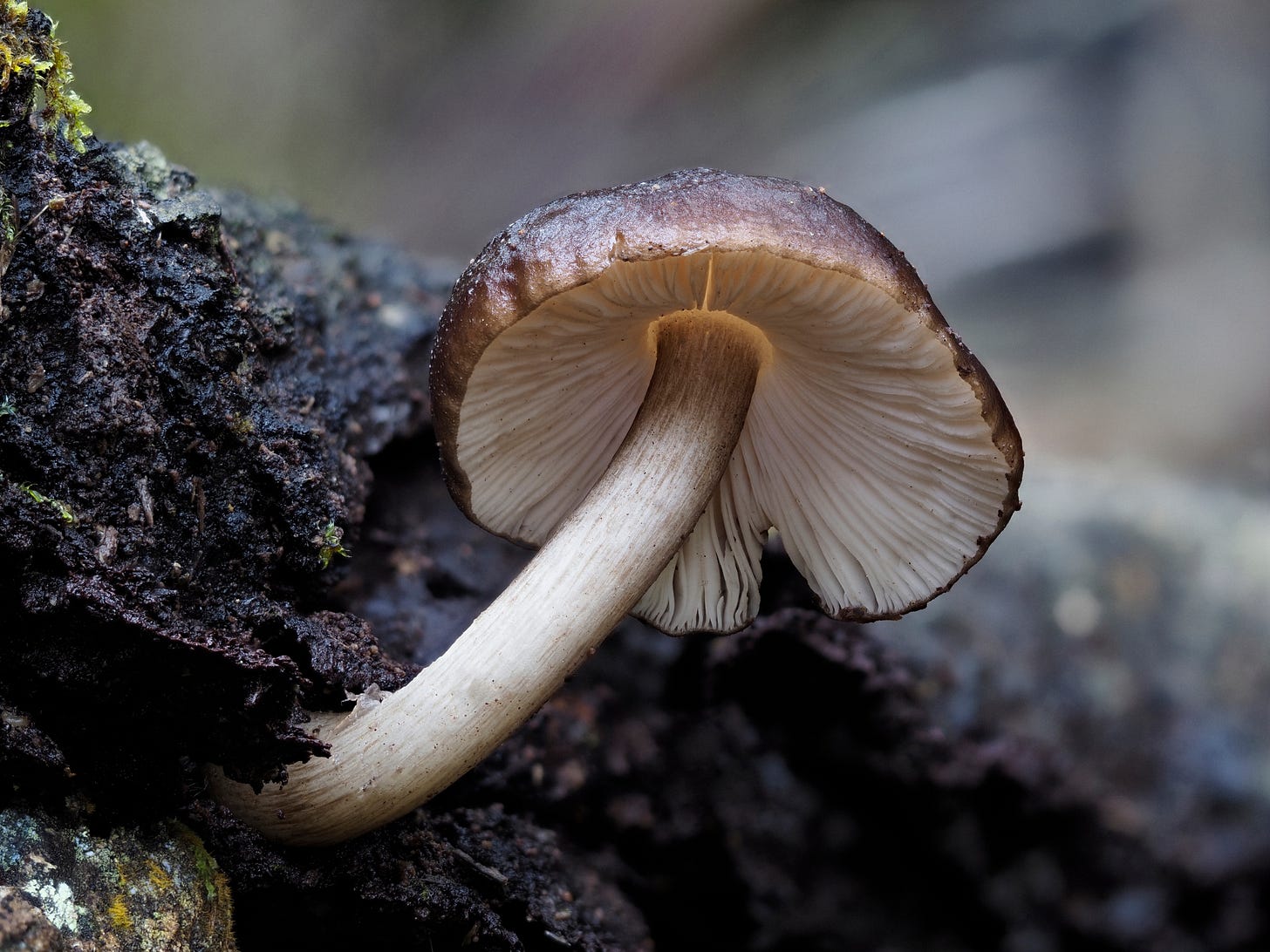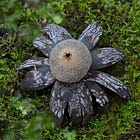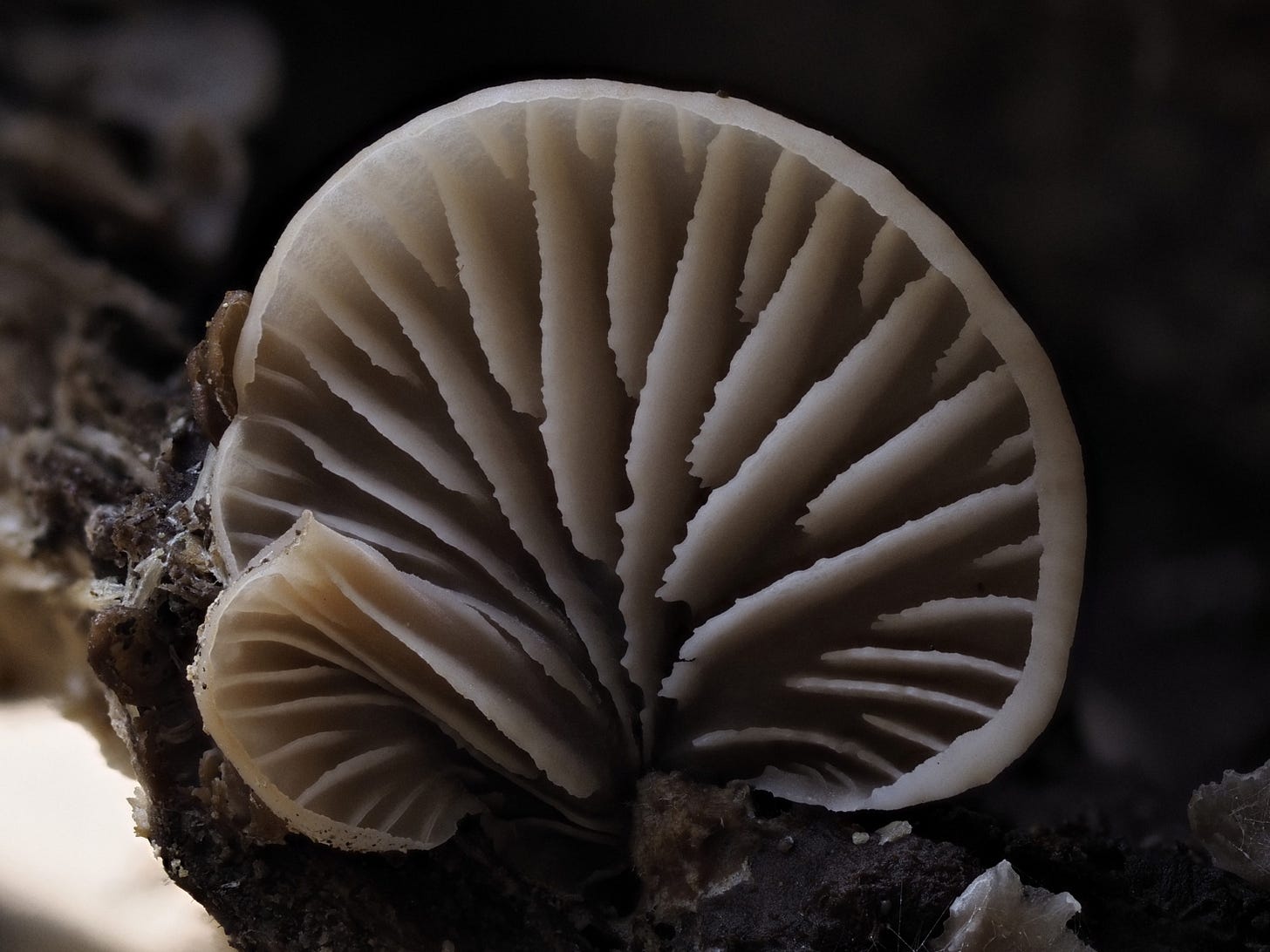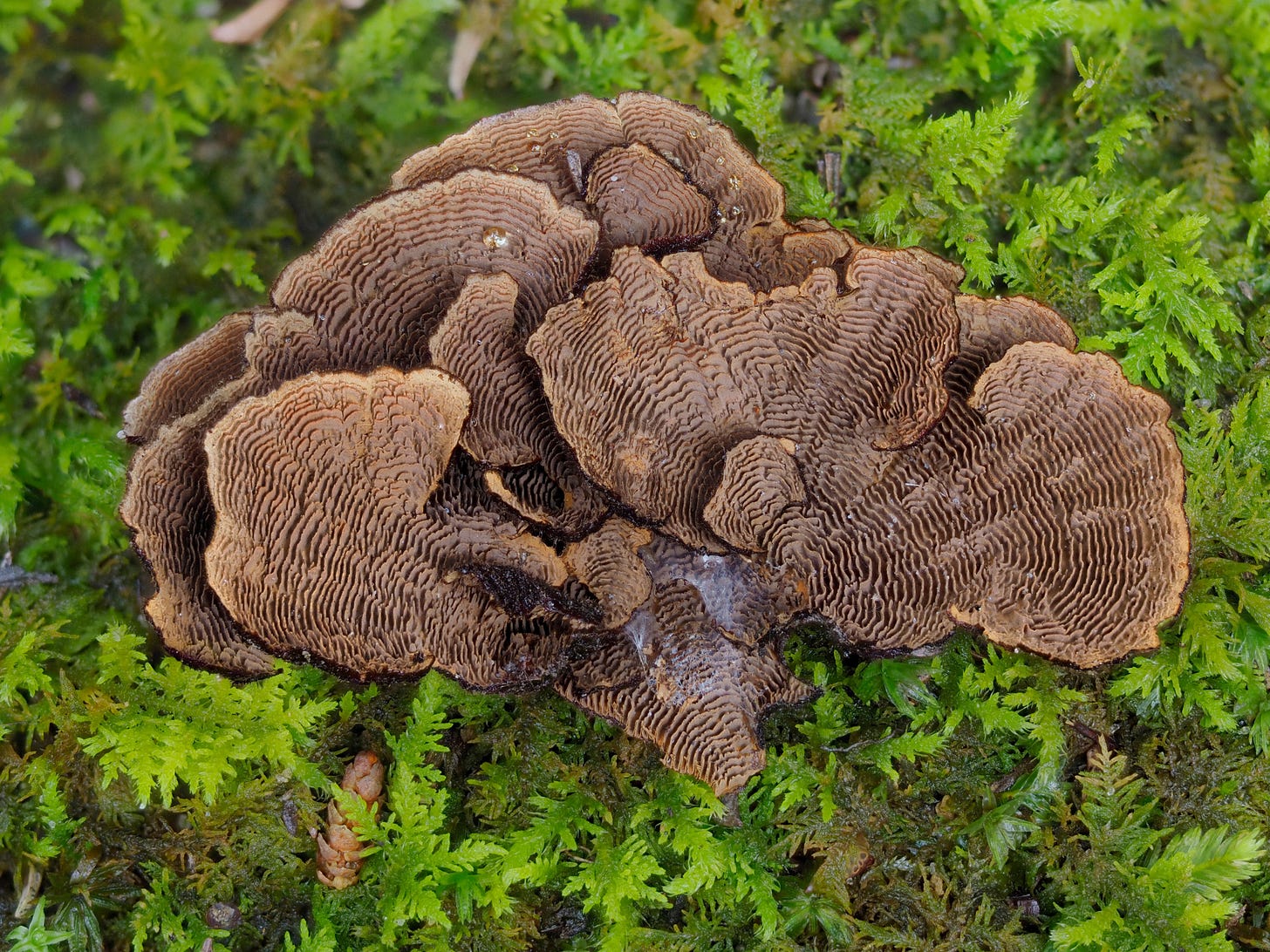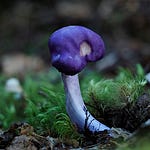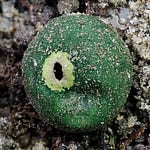In my last post, I talked about finding the Hygroscopic Earthstar at Wakakusayama Hill. I’ve since revisited the place a few times over the month.
Mount Wakakusayama is a grass-covered mountain behind Nara Deer Park in Japan that offers unobstructed views of the city. But behind this 350-meter-tall mountain are trails that follow a stream leading up to the lookout. Instead of taking the 15-minute shortcut—I take the long way.
It’s a peaceful walk up the trail and through the forest of towering, massive, century-old Japanese cypress and a mix of pine, maple, plum, and pieris.
While it’s been cold and rainy, the number of mushrooms has been sparse, with most being wood-decaying mushrooms.


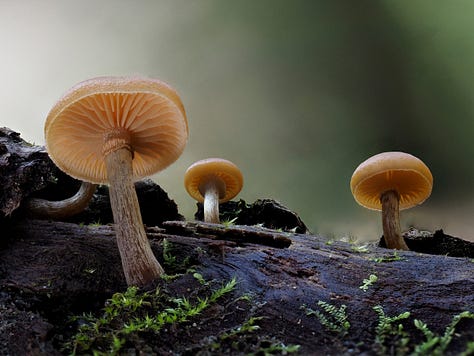

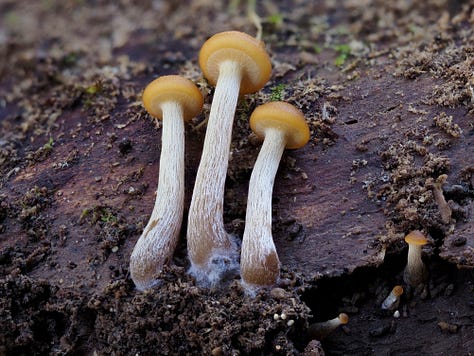
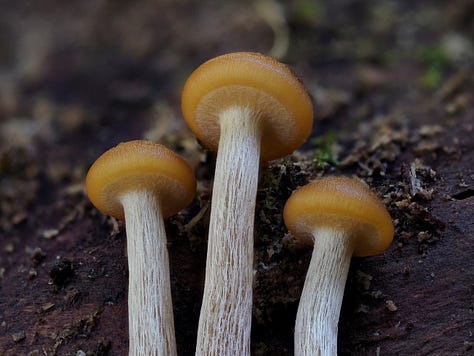



The most prolific species I encountered was Galerina marginata, a caramel-capped candy-like yet deadly toxic species.
These mushrooms are extremely dangerous due to the deadly amatoxins they share with the notorious death cap mushroom (Amanita phalloides). Galerina marginata is found across the Northern Hemisphere, spanning Europe, North America, Asia, and even Australia.
Epitomizing the typical LBM (little brown mushroom), it’s easily mistaken for several edible varieties such as Armillaria mellea, Kuehneromyces mutabilis, Hypholoma capnoides, Psilocybe subaeruginosa, and Conocybe filaris.
Despite their toxicity, I found them to be quite photogenic! There were even smaller, different Galerina species (G. hypnorum).

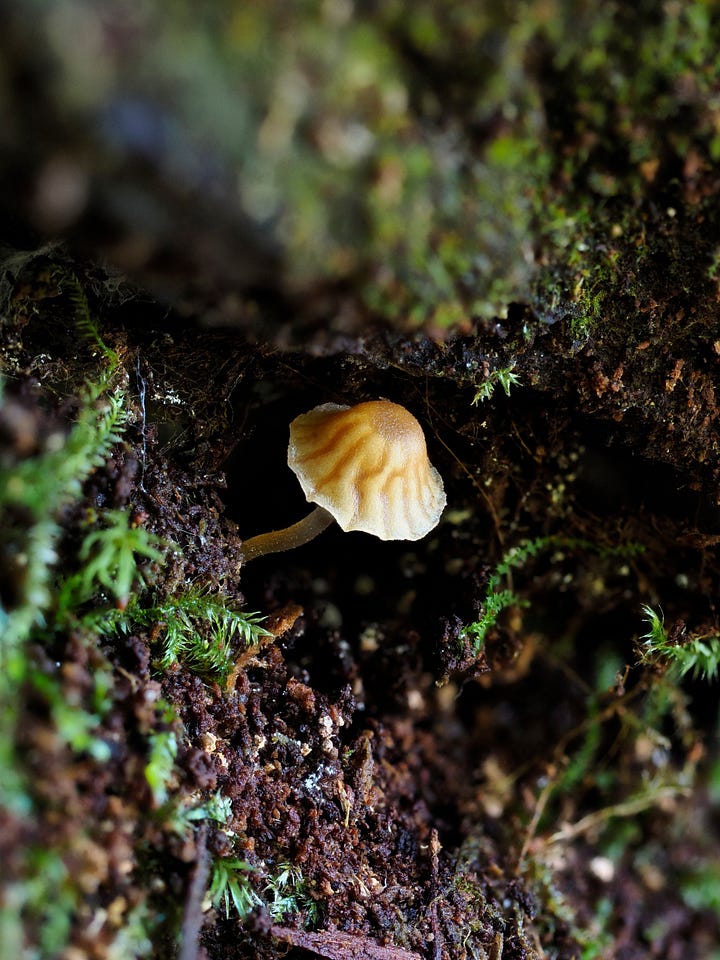
At a certain point on the trail, near the stream, is a huge pile of logs and branches harboring many colorful species, including purple Trichaptum biforme / Violet-toothed polypore.



I met up with a couple of friends (Luca and Christine) on two different occasions and revisited the same pile, with each visit offering up even more species.
From the minuscule Marasmius - “Pinwheels and Parachutes.”
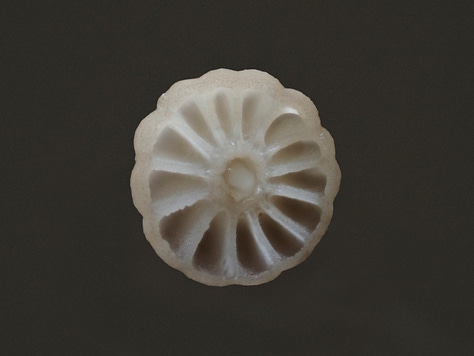


To the larger Pluteus sp. aka Deer Mushrooms.
And dark red, latex-producing Lactarius sp.
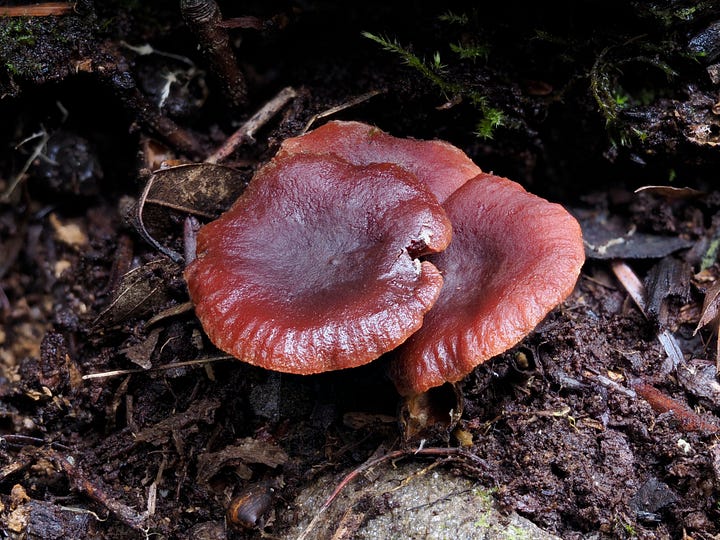
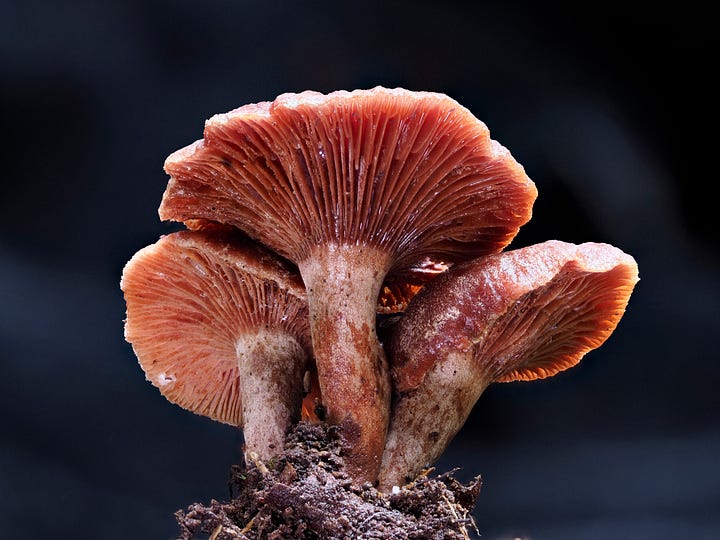
But one of the best finds of the day was by Christine, who spotted what resembled, at first, a Dryad's Saddle or Pheasant Back Mushroom (Cerioporus squamosus). The hunch was warranted given that it’s closely related, but in fact, it is Polyporus tuberaster (both edible).
I’ve eaten Dryad’s Saddle mushrooms during my time in Scotland. I remember slicing younger ones into thin pieces, frying them with butter, and adding them as a pizza topping. The flavor reminded me of fried scallions.


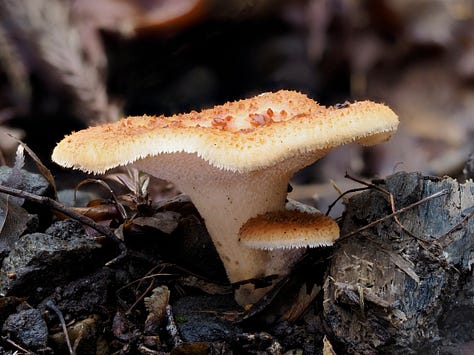
Polyporus means 'having many pores,' and upon closer inspection, you can see very small tubes/pores.
The specific epithet tuberaster means 'with tubers,'’ and in the case of the Tuberous Polypore, this refers to the tuber-like lumps of hyphae at the base (although it wasn’t apparent with this specimen).
At the base of a tree stump, I found a lone Lycoperdon perlatum, or common puffball.
[In the video]: I poked this one to release spores. When I revisited the site after 15 days, I counted over a dozen more that had popped up. There were a few species of puffball mushrooms spotted along the trail, most notably, Calostoma japonicum.


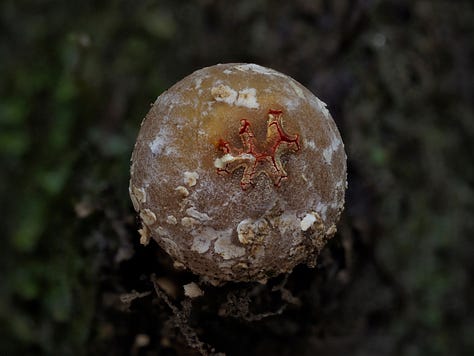


The common name given to some species, “pretty mouth,” alludes to the brightly colored raised openings (ostioles) that may somewhat resemble lips. Other common names include “hot lips” and “puffball in aspic.”



Lycoperdon perlatum, aka common puffball, gem-studded puffball, or devil’s snuff-box.
Some indigenous groups believed that the spores could induce blindness, so the puffball is also known by local names, including “blind man’s bellows” and “no-eyes.”
It is off-white, and the top has short, spiny protrusions, also referred to as “jewels,” that can be easily rubbed away, revealing a net-like pattern beneath.
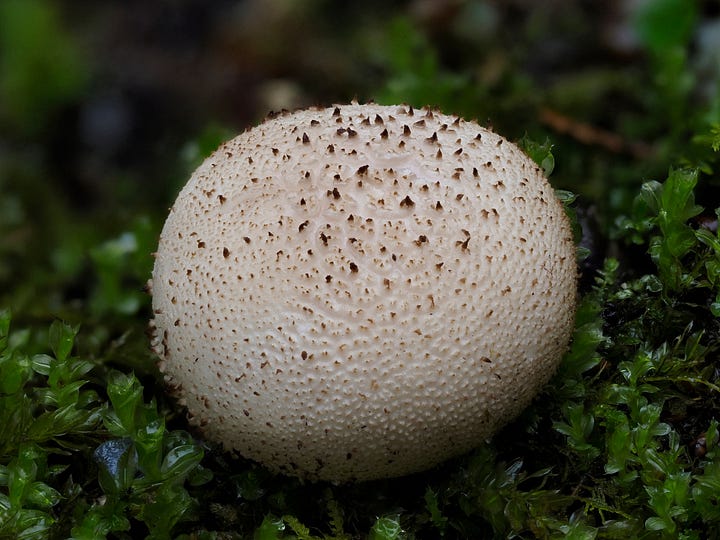

When older, it turns brown, and a hole at the top opens, allowing for the release of spores in a burst triggered by touch or the impact of falling raindrops.
Research conducted using high-speed schlieren photography revealed the spores are propelled from the ostiole at a speed of approximately 100 cm/second, creating a cloud about a centimeter tall a mere one-hundredth of a second following impact. A single raindrop landing on a specimen can emit over a million spores.







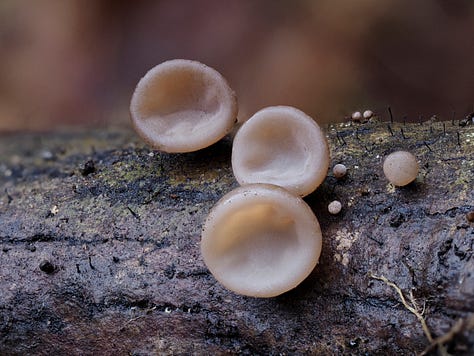


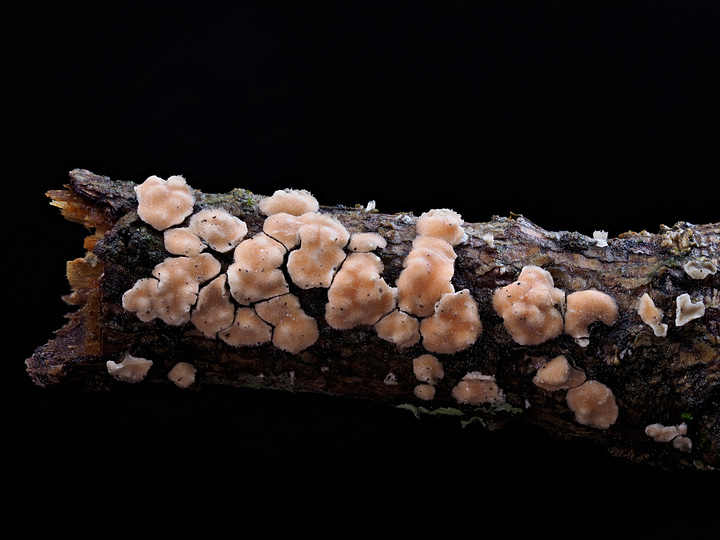


While not fungi, and for the sake of mixing it up a bit here, I’ve included a myco-hetertrophic species of plant—something that, at first glance, reminded me of budding Ghost Pipes. They are very slow growing and they look about the same after spotting them two weeks apart.


Myco-heterotrophic plants are partly or entirely non-photosynthetic plants that obtain energy and nutrients from fungi. To meet their nutrient demands, these plants form a symbiosis with arbuscular mycorrhizal, ectomycorrhizal, or saprotrophic fungi.
I was hoping to spot some fully grown ones, but this is what they grow up to look like:
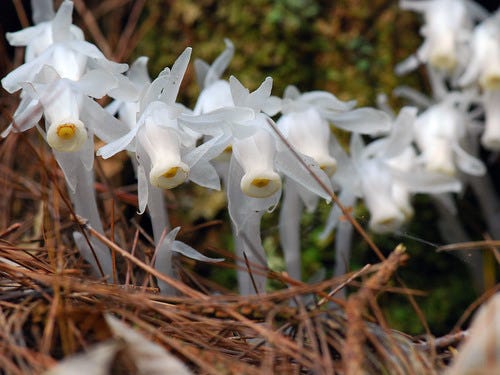
I guess that’s reason enough to come back to Nara.
Update: after spending some time in Japan, I’ve left to come to Jeju Island in S. Korea. I expect to post some more from the backlog and hope to discover some cool species here on the island over the next few months as well, so stay tuned!



